Sometimes, an Achilles Heel isn’t spectacular. It can be a completely mundane thing that totally destroys the economic viability of fixing a car, whether it’s an unobtainium part or one that’s simply far too expensive. When that happens, a car dies with a whimper, not with a bang, but that doesn’t mean it’s not worth talking about. If we’re talking identical replacement parts, a 2005 to 2007 Ford Focus can be financially totalled by a clogged air filter. Here’s why.
An engine air filter is one of the most common maintenance items on any car, because having an engine breathe in particulate matter is generally bad for tight internal tolerances. These predominantly paper filters are usually designed to be replaced every two years or so, and they’re pretty much always dirt-cheap. Figure anywhere from a couple of dollars for a budget aftermarket filter for something like a Toyota Corolla to like $62 for the enormous panel filter in a Porsche Panamera. It’s not rocket science, clean air in keeps an engine happy, and changing the filter regularly prevents it from getting clogged with junk.
Indeed, when Ford launched the U.S.-market first-generation Focus in 1999, it came with a normal serviceable air cleaner that contained a replaceable paper filter. Motorcraft part number FA188, to be precise. Why? Because it works and it’s the right move. Except for the SVT, all Focuses used this filter arrangement through 2004, but then Ford decided to make a change.
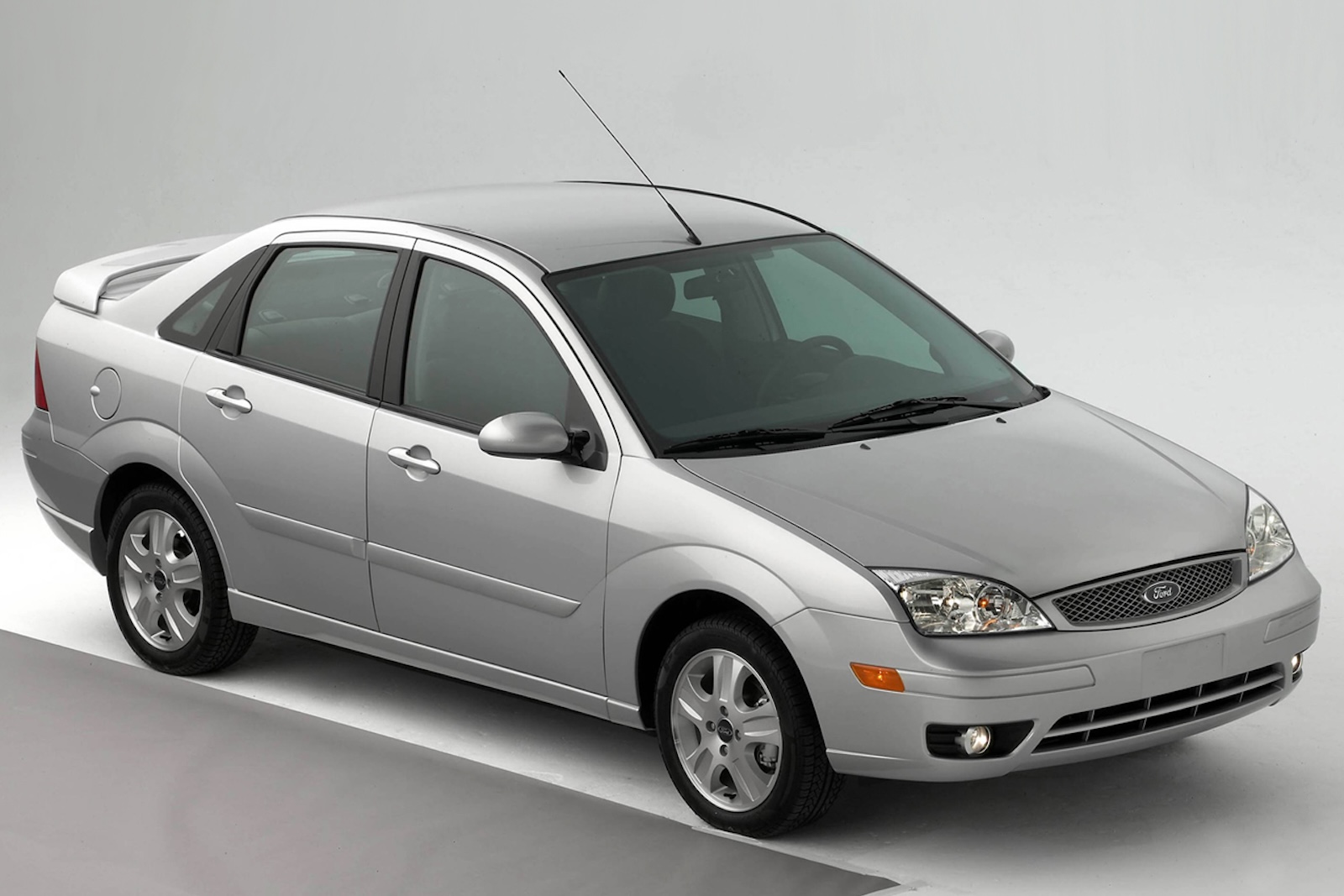
While the rest of the world got an all-new Focus for 2005, North America got a facelifted first-generation model that took some of the weirdness out of the dashboard, updated the lighting and styling to look more modern, and ditched the old 110-horsepower CVH base engine in favor of a 136-horsepower two-liter Duratec unit. In most ways, it was still the same great-handling car that Americans had grown to love. Good stuff, except for one infuriating change.

See, Ford decided to implement a lifetime air filter. Huh? Yep, instead of a paper element you could change every couple of years, the 2005 Focus featured a sealed airbox in the driver’s side wheel well, one that was filled with a series of progressively finer foam elements and featured a gauge to display when the filter was clogged. In theory, it was supposed to be good for 150,000 miles of driving, although because there isn’t really a such thing as a one-size-fits-all “lifetime” part interval, you can probably guess what happened next.
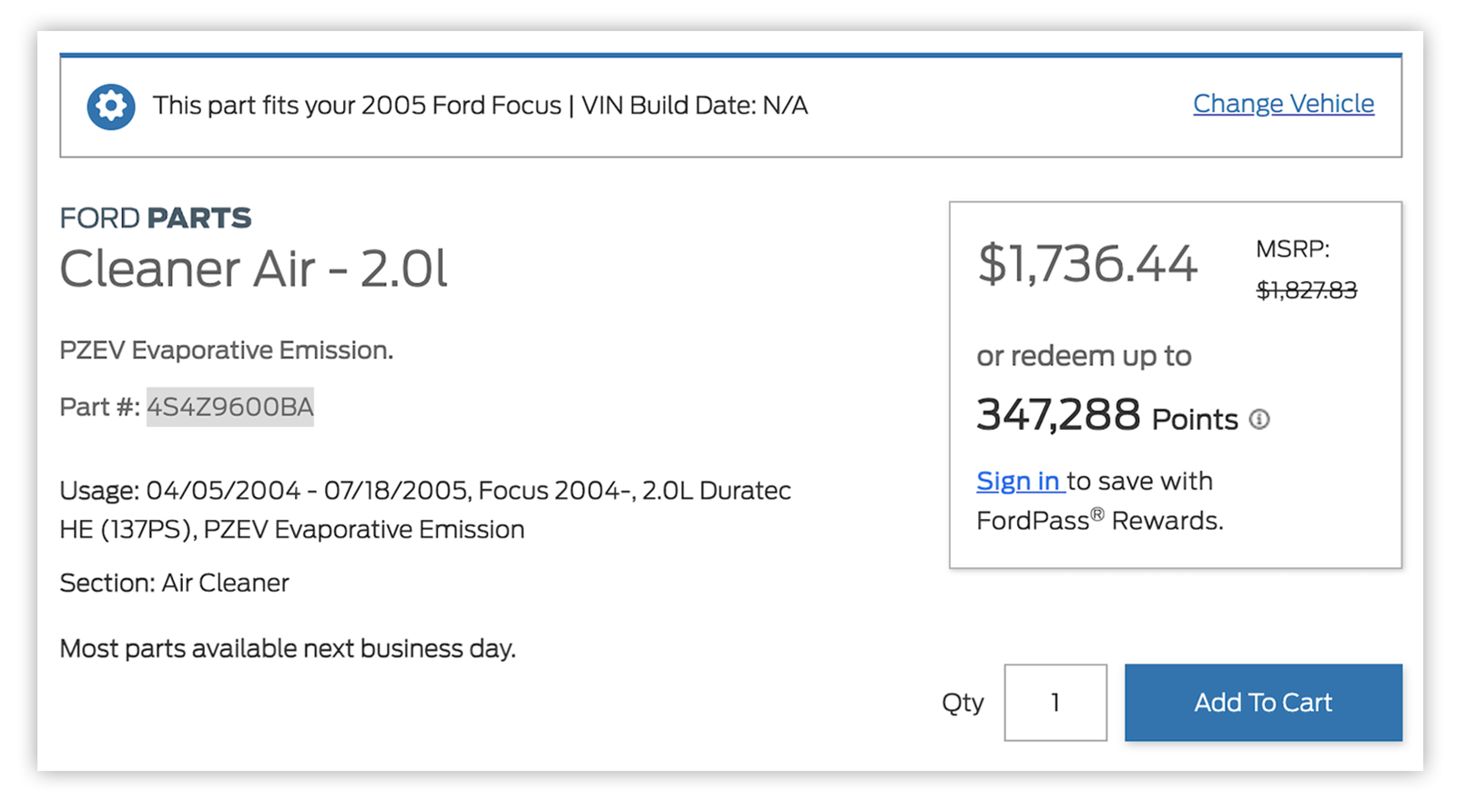
Yep, some owners found that these long-life air filters did eventually clog, resulting in reduced fuel economy and, in extreme cases, rough running. However, instead of just swapping out a cheap air filter, a replacement lifetime air filter is seriously pricey. While it used to cost a few hundred dollars, a replacement sealed air cleaner for, say, a 2005 to 2007 Focus that meets PZEV standards now lists for $1,827.83 and often retails for more than $1,500. That’s about the cost of an entire first-generation Focus.

Understandably, the heavier 2008 refresh saw the adoption of a conventional airbox in non-PZEV models, but the story doesn’t end there. Ford also used a “lifetime” engine air filter design on the 2010 to 2012 Fusion Hybrid, and it also caused a handful of issues once mileage really started to be added. As one Fusion Hybrid owner wrote on the Ford Fusion Club forum:
Well recently while driving on freeway the car would shut down on me when going at 70 mph or over. That’s the only thing I could think was wrong with it, not enough air going in through air filter. Decided to get a new one from Ford (comes with MAF sensor already). Took out old one and blew air through air intake tube and it was difficult to blow air through filter. I literally cut the old assembly in half and it was clogged and dirty. My car as over 130000 miles.
Indeed, now that these cars are in cheap used car territory, the lifetime air filter can be a pain in an owner’s side if it clogs. While the assembly for a Fusion Hybrid is cheaper than it is for a Focus at about $456, it’s also on backorder. Not great considering most jurisdictions categorize the air box as emission equipment, and especially sub-optimal when you consider that if a conventional serviceable filter element with a 15,000-mile replacement interval was used, there isn’t really a lifetime parts cost advantage to going with the lifetime filter.
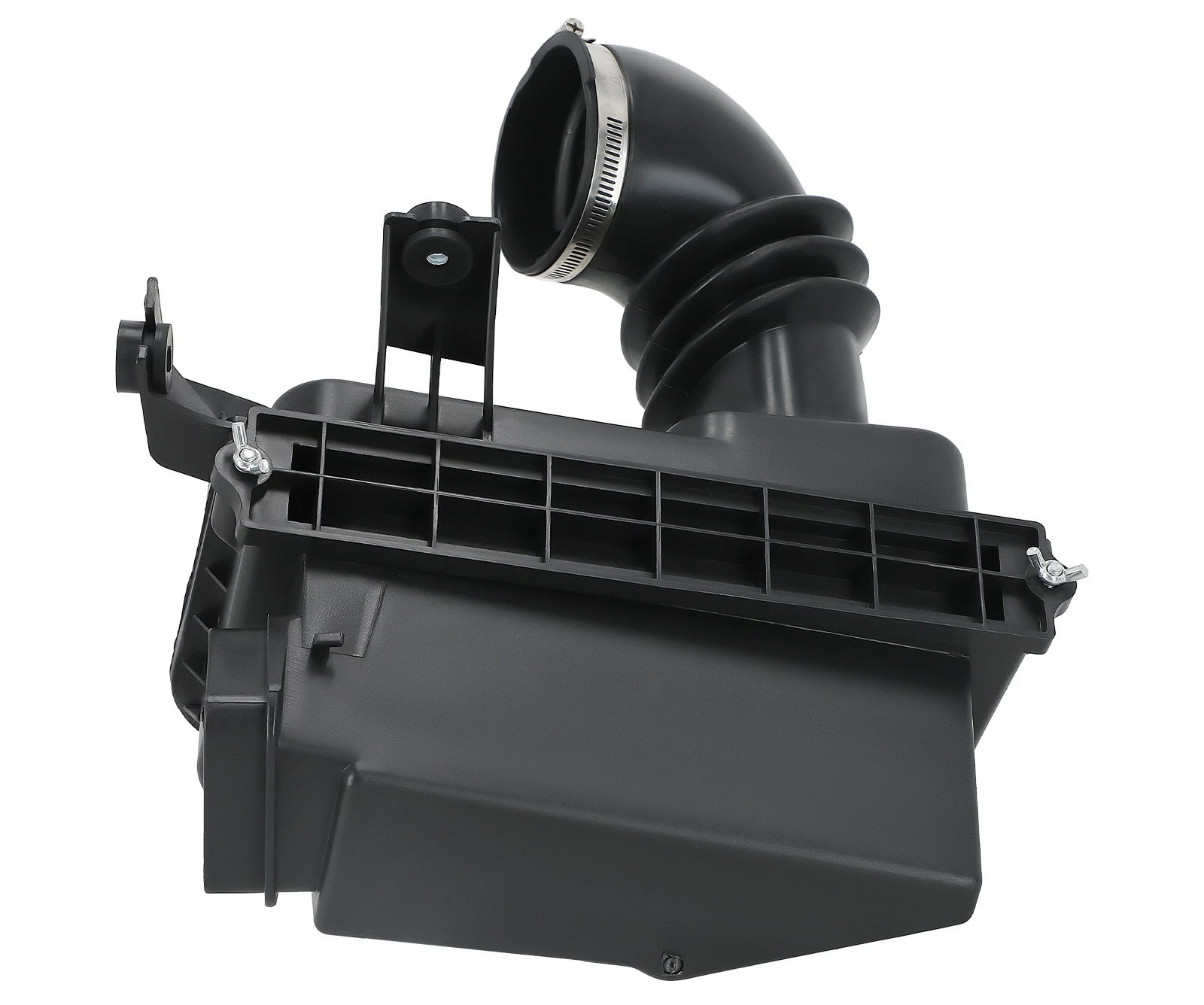
Thankfully, for Focus owners in dirty environments with clogged lifetime air filters that don’t have to use the factory air box to comply with local emissions standards, there is a solution. You can pick up a third-party air box with a serviceable air cleaner on eBay for about $70, and it will accommodate the filter element from a 1991 to 1994 Saturn SL.
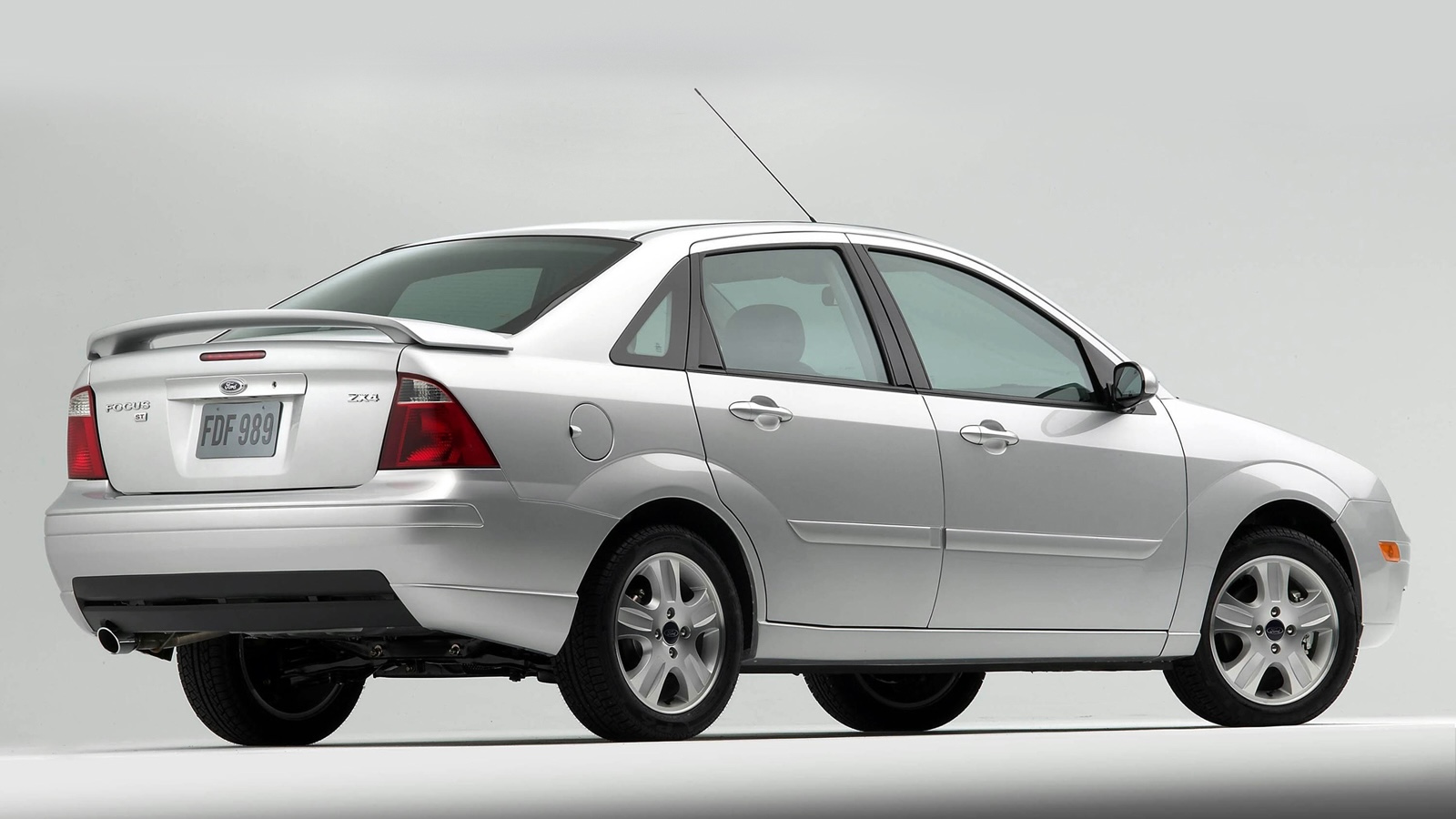
Still, this is one of those things that shouldn’t need a solution in the first place. While a dirty air filter probably won’t kill a car, a replacement shouldn’t cost nearly as much as the car’s worth, or even 20 times as much as a typical standard air filter usually costs. Unsurprisingly, Ford no longer uses these lifetime air filters in anything, because a regular air filter just gets the job done.
Top graphic image: Ford
Support our mission of championing car culture by becoming an Official Autopian Member.

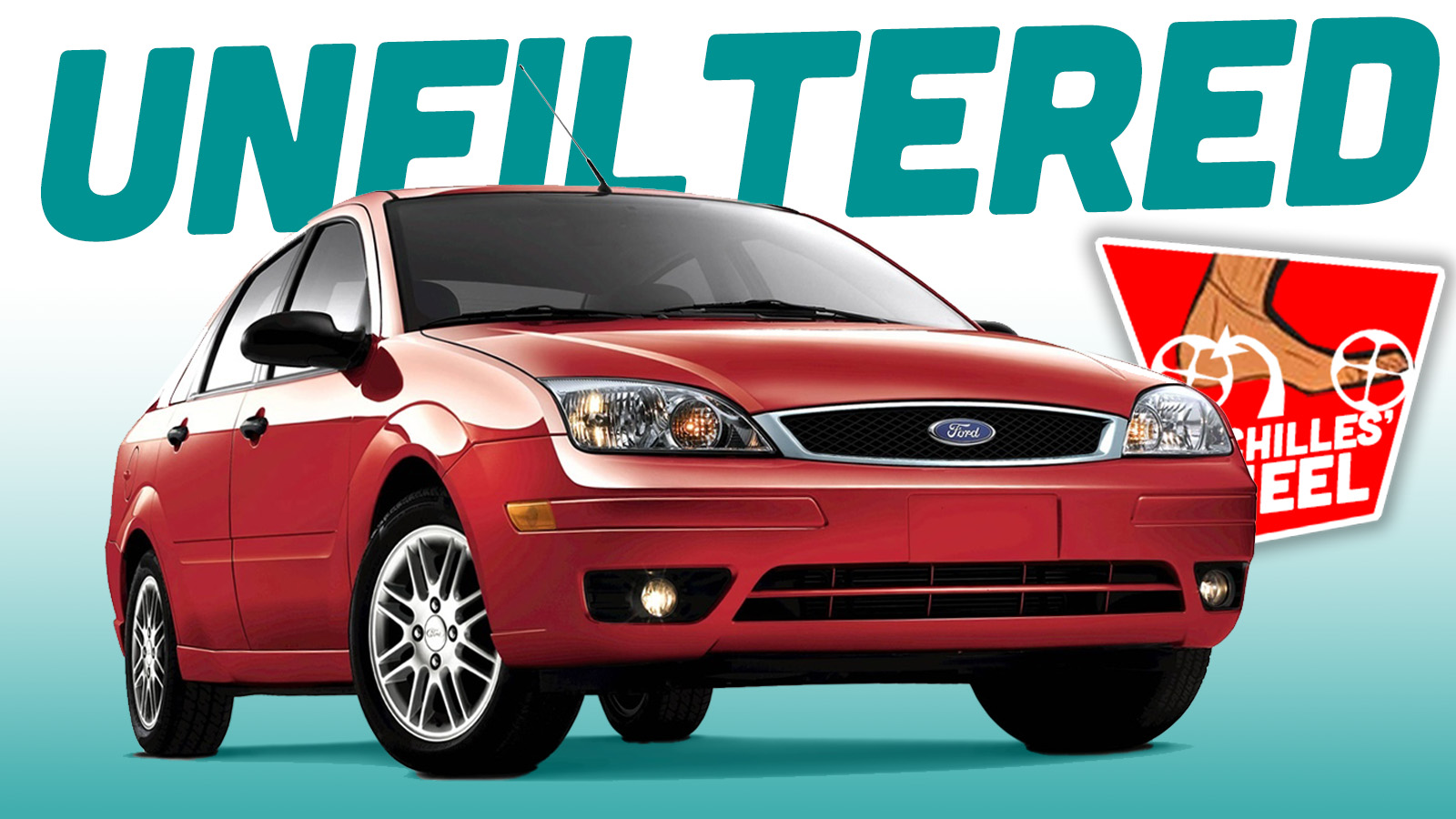





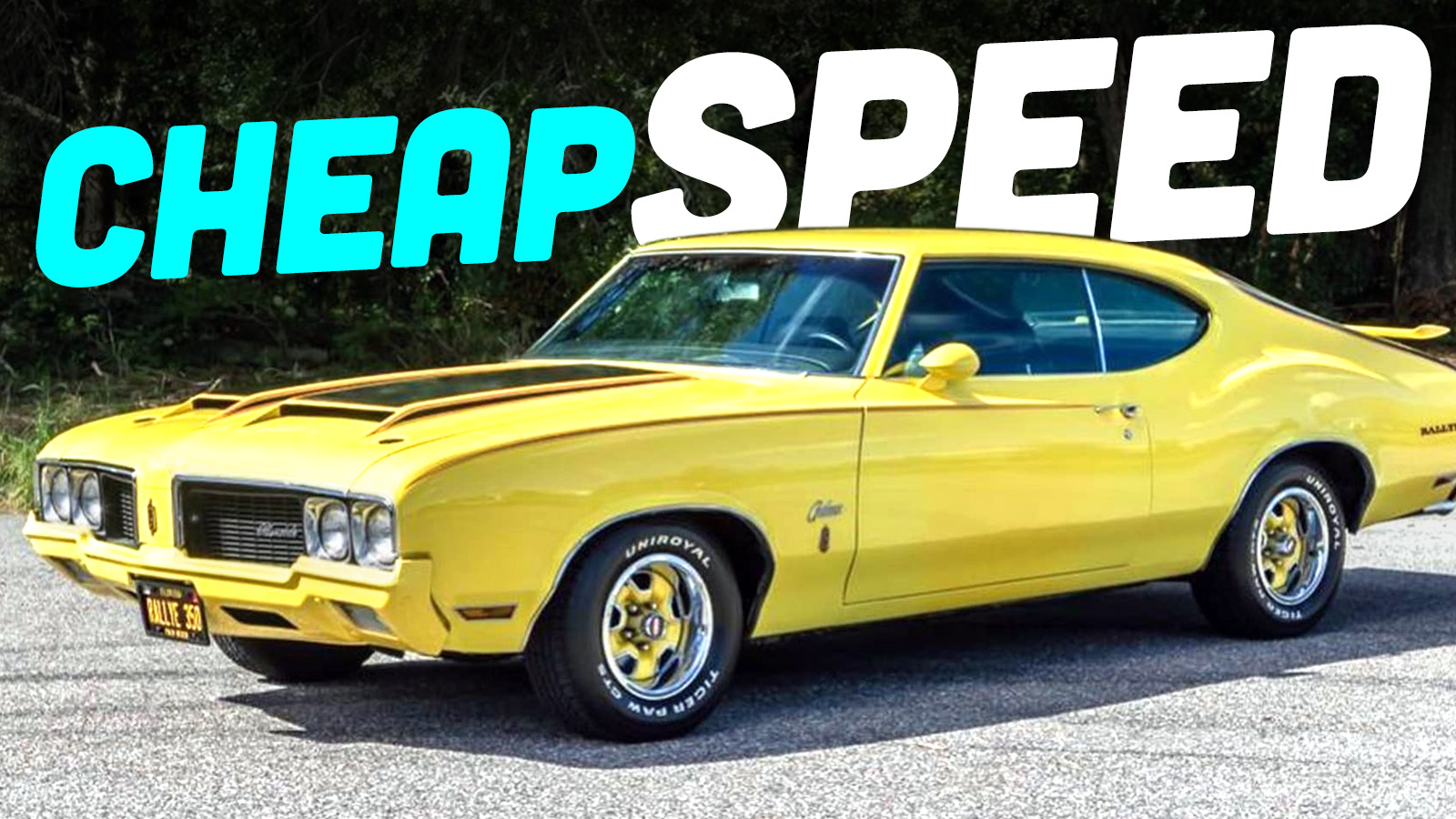
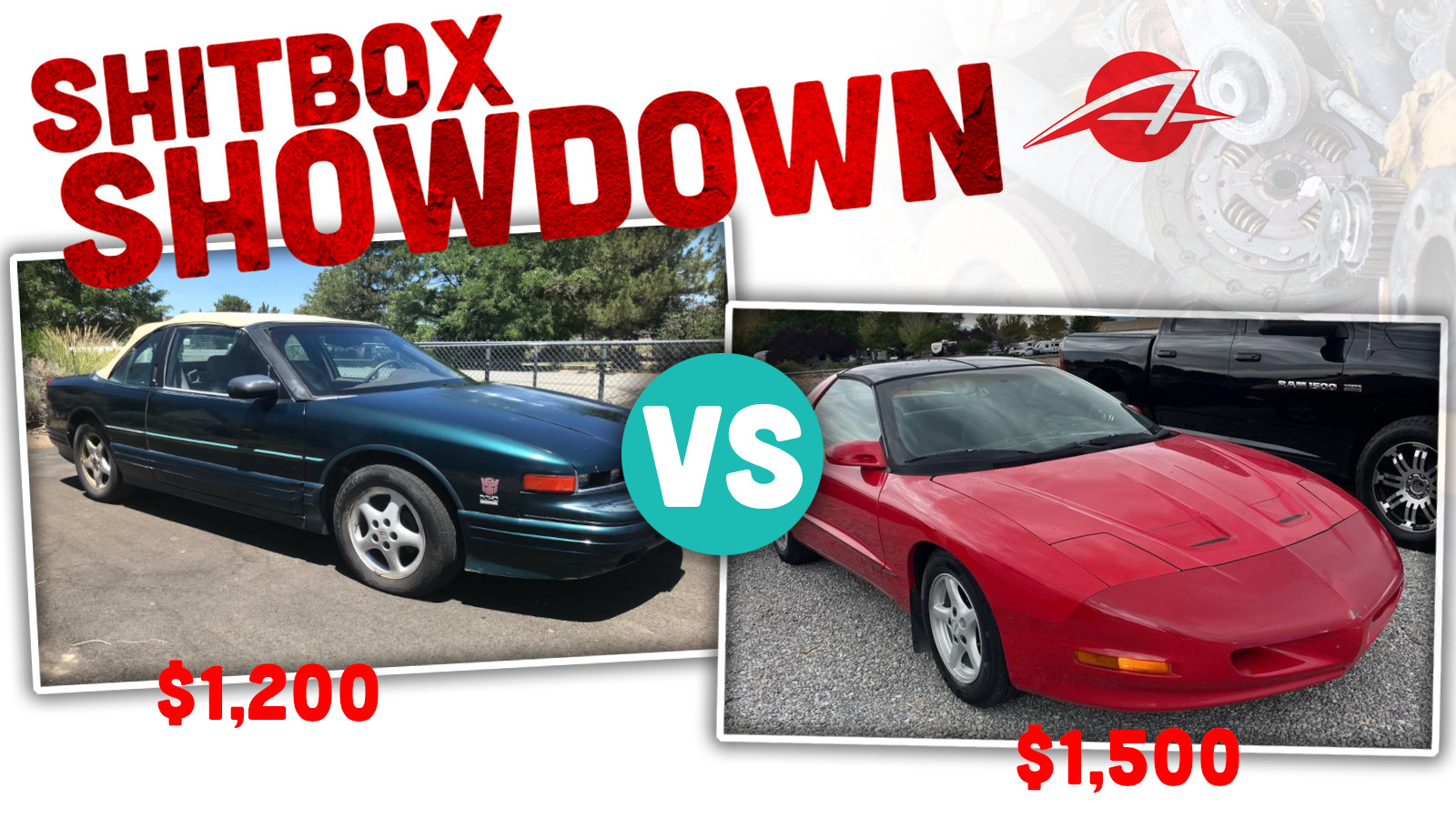
Ford also decided around this time that Focus drivers didn’t need functional transmissions.
I think anytime something is deemed “lifetime”, the definition of “lifetime” should have to be clearly marked next to such verbiage – using a * next to “lifetime” and having the actual determined “lifetime” buried in a sea unreadable text.
Or just keep your old one around and swap it in when you have to go do emissions checks. Maybe I should do this…
Why would emissions regulations care about the air intake? Surely they only care about the exhaust?
(The air intake isn’t mentioned in the MoT handbook https://www.gov.uk/government/publications/in-service-exhaust-emission-standards-for-road-vehicles)
CA Smog rules require it… https://www.smogtips.com/forum-air-filter.cfm
I have to admit, the US is fantastic at taking a law that should be pretty simple; “test how much pollutants a car is emitting”, and somehow ending up with a law that makes everyone’s lives worse, and barely covers it’s initial remit.
I assume if we dug deep enough that this will turn out to be down to some clause put into the law, that was paid for by some large industry group for dubious reasons.
Ford won’t sell any Focuses now for Americans. Too fat, and don’t fit.
I fit my Focus just fine. Mostly Americans just want SUVs and automatic transmissions. Ford screwed the automatic transmission Focus owners with a crappy DCT and did not properly recall or service them.
Sedans and small cars going away is a result of companies building for their largest group of buyers, Boomers. They are older, they don’t want to have lower car seats for ease or getting in and out, they can afford a more expensive car because they have built wealth, and they are still the largest group of new car buyers. For most of society, in most of the world, business and government and everything follows what the boomers want because it has done so for over 60 years. Plus who do you think runs these companies?
Yeesh, for a second I thought it was the cabin air filter for the MK1 NA Focus. Ford didn’t install a cabin air filter but there was a plastic blank there. However, you can buy a cabin air filter and install it yourself. The only annoying part is you have to lift up the cowl to get to it.
I had two Focii with that stupid air filter. I never had to replace mine as the indicators on both were still in the ‘okay’ zone. Rust did in the Focii before the filters needed replacing.
Having said that, if I did need to replace them, apparently you could just install a K&N cold air intake air filter setup at a fraction of the cost and also gain a few hp over the stupid stock setup… which is what I would have done.
https://www.knfilters.com/69-3513ttk-performance-air-intake-system
Absurd…typical Fix Or Repair Daily/Found On Road Dead BS
“However, instead of just swapping out a cheap air filter, a replacement lifetime air filter is seriously pricey. While it used to cost a few hundred dollars”
Wait, what? In what horrible universe did a CHEAP air filter ever ” used to cost a few hundred dollars”?
OK, just checked Amazon. Cheap air filters for an older Focus are $, not $$$.
Thomas I know Halloween is only about a month away but come on, don’t scare me like that!
In a more serious point I suggest exploring the option of an airbox out of a Mazda 3 since it used the same motor.
I think they mean the replacement lifetime air filter used to cost a few hundred dollars.
If that’s the case no thanks. For the price of a $ingle $$$ “lifetime” air filter I could have a few lifetimes of ¢heap regular filters.
Knowledge is power. If you knew about this, you could figure out how to replace it with a conventional filter box from something, or how to take it apart and clean the filter(s) inside. If you didn’t know about it, or had no understanding of what they had done, you might be flumoxed for a while!
I’m not sure the life of a 2005 Focus normally exceeds the life of one air filter….
Actually, the 05-07 Focus models are every bit as reliable as that era of Civic/Corolla. There’s still a lot of them running around in the Front Range of Colorado. Those Duratech Mazda motors were absolutely honey pots of quality. Not overly powerful, to be fair, but just dead reliable and easy to maintain.
Although I will caveat that the alternator is in an INCREDIBLY stupid place and myself and my best friend/storm chasing partner once got trapped in a small town in southern Nebraska for two days because his alternator burned up after us having to rev the hell out of the car to get out of a muddy field after almost being lofted by an EF3 tornado (that is a whole ass story for another time) and the alternator is mounted in such a way that you have to undo the motor mounts and lift it to get to one of the alternator bolts. A typical smoothbrain Ford engineering cost cutting move, to be certain.
The duratec motor is also a common swap when NC Miata motors give up the ghost!
To remove the alternator, do it from the bottom. Put car on jack stands. Unbolt the rear motor mount and pivot bottom of the motor forward, out it comes.
Yeah, PITA, having to lay under the car and push to motor forward with your feet while extracting the alternator.
I did it out the bottom three times with worn motor mounts, then once I replaced my motor mounts I couldn’t for the life of me get it out the bottom and ended up just unbolting the motor mount on the passenger side and pulling the engine forward and out the top. I pretty reliably get about 65k miles out of an alternator on that car, but otherwise dead reliable.
Maybe being a manual trans made it work better…got it’s 3rd alternator this past spring now that I think about it. Haven’t had to change an alternator on any of our other cars since the 90s.
Mine’s a manual too, but I fought it long enough that I just gave up and did it “by the book” and that method barely took much longer to do (and definitely would have been quicker than the amount of time I spent trying to get it out the bottom).
I’ll second the alternator issue! I’ve had two 2007 foci. Scrapped one a couple of years ago with 250,000 on it (and the original air filter). The tin worm had eaten too much of it. I drove the other one to work this morning. About 275,000 and still going strong. The battery light is always on (though there are no other signs), and I have a replacement alternator, just don’t WANT to change it!
It’s really not that bad, I’ve had to change mine 4 times now and I’m down to about 2-2.5 hours to swap it out by myself.
I’ve DONE it before (which is why I don’t want to do it again!).
Nah, they were great cars, durable and reliable, stupid air filter thing aside.
I agree with this take. I’m still salty we got that ugly half-assed 1st gen facelift instead of the excellent 2nd gen Focus in the US market. I heard from a Ford engineer that they were planning on offering the TDi motor to rival the Jetta TDI’s in the US market before the Great Recession scrapped the 2nd gen entirely for the US market. I would have bought the shit out of a 2008-2011 Focus Estate with a manual/diesel!
Weird how the 2nd largest car market in the world (at the time) didn’t get a mainstream product that was sold literally in *checks notes* EVERY OTHER MAJOR MARKET IN THE WORLD. The US market always gets the dregs because they know we’re stupid enough to buy whatever dreck they put on the showroom floor. Ugh.
My daughter’s 2007 Focus still running fine, pushing 190k. Doesn’t use a drop of oil. Air filter indicator is still in the green. I assume if air flow is restricted, the spring loaded indicator would move to yellow/red zone. My other daughter had a 2005 Focus that was past 150k and running perfectly fine until a distracted driver rear ended her, totaling car.
Mine’s been dead reliable except for eating through alternators every ~65k miles
Dorman makes a retrofit part, a AutoZone/O’Reilly/ Amazon “universal” “CAI” filter assembly is another work-around, and junkyard parts scavenging is yet another. The dozens of us Focus enthusiasts have been in on this for years, outside CA anyway. Otherwise, the 2.0 Duratec can outlast anything if you maintain it and not purposely try to kill it.
Yes they can, because that engine was engineered by Mazda as their L-engine!
You seem to have missed the point of this. It’s not about cost or reducing servicing requirements. It’s all about that PZEV rating, which requires ZERO evaporative emissions. And a big source of evaporative emissions in modern cars is the air filter assembly. These things trap the vapors that could come back through the intake system and escape into the outside air. It’s the same reason that PZEV cars usually have insanely expensive fuel tanks with integrated lines and a “lifetime” fuel filter sealed inside the tank. Every joint in the system is a potential evaporative emissions leak point. Similarly, where the air box would have to come apart to allow the filter to be changed is also a potential evaporative emissions leak. That it might cost the fourth owner a fortune to replace someday matters not compared to getting those CARB credits today. PZEV went away in 2017, and so has a lot of the worst of this nonsense right along with it. Automakers figured out how to make non-sealed airboxes meet the requirements anyway, mostly with charcoal filters in the intake upstream of the air filter. Which of course, people then cut out to increase airflow. <facepalm>
PZEV and SULEV vehicles were Federally required to have a 15yr/150K warranty on all of the emissions-related parts, but of course these cars have now all aged out of that. My SULEV 2011 BMW just lost it’s warranty coverage this past June, as it turned 15 on 6/30/25, being a very early production ’11. And if you think these air filters are bad, check the price on a radiator for a SULEV BMW. It has a coating on the outside that reacts with and cleans up smog in some tiny amount. But to make SURE you don’t put the massively cheaper regular radiator in the car that is functionally identical as far as the engine is concerned, there is a nice expensive sensor that is mounted on the radiator (it measures the temperature and correlates it to the other water temp sensors, so can’t just have it hanging in the breeze). That is technically not replaceable (there are hacks though), and of course there is no provision for it in the non-SULEV radiator. No sensor or the sensor fails? Permanent CEL. I was really hoping that the radiator would fail before the 15 year mark, but no such luck. I probably should have helped it along somehow.
Thank you for writing that up so I didn’t have to.
The look on customers’ faces when I’d tell them that their check engine light was on in their BMW over a bullshit coating on the radiator was always priceless when I worked at the BMW dealership.
It really is completely ridiculous.
As the current owner of two Ford products (08 Escape XLS 2.3 FWD and a 2012 F-150 XLT X-Cab with 5.0 Coyote/4×4/ 8′ bed) Ford does some incredibly boneheaded things with their engineering. They get certain things REALLY right, and other things is like WTF.
Great example is the designing the lip of the inner fender arches on the Escape to catch salt/slush and not putting drain holes in the rockers (which is why every single Escape/Mariner/Tribute that resides north and east of Wichita has rusted out rear fenders and rockers). Luckily my lil shitbox came from central TX so it has none of those rust issues. My 2012 F-150, on the other hand, was a Canadian truck originally and spent the first 9 years of its life in service in the GTA, and the 11th gen F-150 is NOTORIOUS for rusting out rockers and cab corners because of a combo of a leaky 3rd brake light seal and the fact that FORD DID NOT PUT DRAIN HOLES IN THE ROCKER PANELS FROM THE FACTORY. So the snow/slush/grime just… sits there unless you stick the washer nozzle up under the truck and blast it out.And there’s a nice little ledge on the inner rear fenders where the salt/slush sits as well, same issues as the Escapes.
As a consequence, the rockers on my truck are all but gone. and there’s rust on the lower edges of the doors, too. Cab corners are toasted. The truck has 254,000 miles on it and the rest of the body is quite clean/straight, so I’m going to get the rust ground off and get aftermarket cab corners/rockers welded on (which have the drain holes Ford SHOULD have included), Line-X them and call it a day.
Oh, and on 11th gen F-150’s, they have NO CABIN AIR FILTER. Ford went the opposite direction with cost cutting on the 09-14’s and just… didn’t install a cabin air filter at all.
So you get all kinds of lovely crap blowing through the vents right in your face. There are aftermarket options available, but they cost $250+. So I just blow out my vents on my F-150 about twice a month with compressed air.
I grew up on Fords, and I generally like them (well, up until about 2018, the newer ones are DOGSHIT) but the engineering choices they make are absolutely astonishingly dumb at times.
To be fair, we lived for decades without cabin air filters.
How did we ever survive…
We also survived with crank windows, but would you be okay with crank windows on a $50k truck?
I suppose not, although I wouldn’t buy a $50,000 truck. I probably wouldn’t buy a $50,000 car either, but if I did, I surely would want power windows. And I might even raise an eyebrow if it didn’t have a cabin air filter, I suppose.
But when I replace the cabin air filter, and see the stuff that’s in there (including a lot of bugs and dust) I am glad we have cabin air filters! I just make sure I change them myself ($15) instead of letting the dealer do it ($100). When I take it in for maintenance, they often tell me “the tech says you need new cabin air filters” even if I just changed them… but that’s another story.
I occasionally have to fish the leaves out of the fresh air vents under the dash of the family’s 1968 Cougar. (insert laughing emoji)
2008 Ford Escape here (but the 3.0V6 and 4WD) and can confirm the whole rear arches and rocker rust thing up here in the NE. Outer arches originally went, and I just taped over them with metal tape to get thru inspection, but went on a road trip this summer and kept hearing a clunking noise at every pothole/road imperfection. Took apart the interior when I got home, as I couldn’t see an issue from the outside, and lo and behold, the rear fenderwell, which also held the shock mount, was disintegrated and just kinda bouncing up and down in the wheelwell! Both sides had it, but the one was gone altogether in the space of a year, as I’d had it inspected the previous year and didn’t have that issue then. So I bought replacment rear wheel wells and the panel that contains the outer arches for both sides and had that and the rockers done and everything painted and undercoated. Truck has 175k miles and people think I’m crazy for doing it or putting the money in it, but I work from home, so I don’t drive a lot, and rather than get into a car payment for several years, I dropped several thousand and got everything taken care of, and if I can get another 100K out of it, I’ll be happy.
Yeah, I got SUPER lucky with mine. Bought it for $3k cash with 92k miles in May of 2023, I was down in DFW for a work gig and wanted to buy something for a DD for cash. I had ridden down with a couple buddies and I just took an Uber over to Enterprise, grabbed their cheapest economy car and went and looked at about a half dozen vehicles before I randomly spotted that one on FB Marketplace. It had been traded at a Ford Dealership, and was listed for $7k, but then it got nailed with baseball size hail and the dealership was cut an insurance check for it, but the insurance company didn’t want the car (they didn’t think it would get any money at auction) so the dealership just wholesaled it to one of their former sales guys who has his own little independent dealership about 20 minutes out of Fort Worth, and they just replaced the windshield and the back glass and put it on the lot for $4k, I talked them down because I rightfully pointed out it would be a difficult sale with such profound dents all over the body.
(I’m a storm chaser, so the hail damage was fine with me).
I hate that it’s gray and an automatic and the FWD is kind of annoying at times, but it’s honestly been a rock solid little rig. Aside from a few suspension problems, and having to replace the valve cover gasket, it’s been dead reliable, gets about 24 mpg combined, and just does everything I ask of it. I’ve put 43,000 miles on it in 2.5 years. It has 135k and some change on it now.
I’m giving it to my parents to serve as their backup vehicle on the farm in Colorado, and I’m sure it’ll be around for many years to come unless someone runs into it hard enough.
The Escapes, especially in 4 cylinder or hybrid guise, are WAY better vehicles than most people think, I personally think they are 85% as good as that era of CR-V or Rav4 but a few thousand cheaper because people see Ford and think ‘problematic’. Which is, sadly, true of the newer ones… Ford for some weird reason cranked out a bunch of mostly reliable and well built cars during the Great Recession era, but 2013+ when they went to the stupid PowerShit and the EcoBust engines, they became unreliable shitboxes.
Curious. Why aren’t you mad at your state for spending millions a year (billions over time) of your tax money to dump salt on the roads that destroy your cars and the highway itself?
Full disclosure – I grew up in Michigan and thought that cars rusting out in a decade was completely normal and salt was the only way to deal with snow. Then a bit more than a decade ago I moved west to a land were salt is not used and cars do not rust away and hundreds of inches of snow falls each winter.
I realized there was another way and started to wonder why some locations choose to purposely destroy their citizens cars. (Seems to be basically that there are massive salt deposits in the Midwest and Northeast.)
Your answer can likely be found in how much of the economy of the state in question comes from the auto industry.
And how cheap salt is.
Is it cheaper than sand?
I had a 2001 Focus in College. Piece of crap cost twice as much to keep on the road as it did to buy in the first place (the opposite of what I bought it for as a broke college student). Idiotic things like 3X fuel pumps (finally recalled on the third round) and plastic cooling system parts that ruptured at the seams. Spiteful cost cutting nonsense. After I graduated, I kicked that piece of trash to the curb and vowed to replace it with something that was either infinitely reliable (doesn’t exist) or could be fixed with a paperclip and bubble gum. Thus began the air cooled VW phase of my life, and my car hobby. Ford is the one manufacturer I’ll have nothing to do with.
You had the problematic early Zetec engine. Those were trash motors and they gave early Focus adopters a tainted view of the vehicle. They got rid of it after 2002 and the 03+ Focus is a solid vehicle. Ford really does love beta testing products directly on the consumer, I’ve found.
They used this crap in ’04 for pzev granola curtain ones too. I found that out the hard way. Also just for everyones ridiculous giggle, that pzev focus has a stupid expensive exhaust because it’s basically made of catylitic converters.